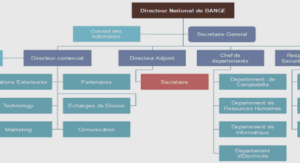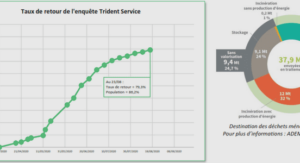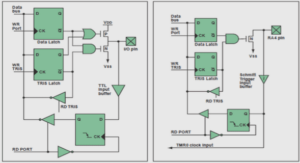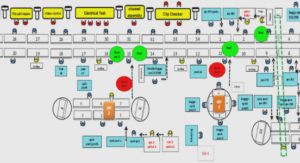Contrast filtering techniques
With the rapid increase of the achievable peak intensity at the output of table top TW laser systems, the temporal contrast of the generated pulses started to attract interest. The European research program named SHARP (Suppression over High dynamic range of ASE at the Rising edge of ultra intense femtosecond pulses) started for the theoretical and experimental investigation of the different solutions for measuring and increasing the temporal contrast in ns regime. This temporal contrast is determined by the ASE, mainly generated in the first, high gain, amplification stage (section 2.2.2). All the filters that enhance the temporal contrast use a non linear process to exploit the different intensity between the main pulse and the background. A non linear filter is characterized by a relation: Iout = f(I n in), with n ≥ 2. Considering for example a relative ASE level of 10−6 and a second order nonlinear filter, the transmitted intensity is squared and the ASE pedestal is then rejected to a relative intensity of 10−12. The transmitted pulse needs then to be discriminated from the input pulse using for example a difference in wavelength, polarization or phase. Several nonlinear filters were tested and can be classified by their position in the laser system. 63 Experimental results on XPW generation Filters at the beginning or in the middle of the laser system When the filter is implemented inside the laser system the main non linear effects used are: nonlinear polarization rotation (NER) [9, 11] and cross-polarized wave (XPW) generation [6]. To work correctly these filters have to be seeded with a sufficiently intense, compressed pulse. This means to amplify the pulses in a first CPA to the > 100µJ level, to clean the pulses after the first compression and then to stretch them again for a further amplification that keeps the ASE constant (using low gain amplifiers). If the XPW filter is implemented at lower energy, the first CPA can be substituted by an amplification in the fs regime and compensation of the dispersion accumulated during this amplification [1]. Another kind of filter uses a saturable absorber [5] to increase the temporal contrast of the pulse amplified in fs regime without the need to recompress it. This filter can not be applied to repetition rates higher than 10 Hz due to thermal problems. Filters at the output of the laser system The second solution is to clean the pulses directly at the the output of the CPA laser. This requires filters with a high transmission efficiency to limit the energy losses in the filtering process. The first non linear process that satisfies this requirement is SHG [13]. Furthermore SHG, dividing by two the wavelength, make it possible to focus the output beam into a smaller focal spot and thereby to maintain the same focused intensity with a lower input energy. The second process is ionization on a dielectric material. In this case the filter is named plasma mirror. Details of this filter will be given in section 7.5. Its drawback is that it is destructive and therefore not well adapted at high repetition rates.
Historical development of XPW generation
In general, light propagation through nonlinear crystals experiences nonlinear polarization rotation and induced ellipticity (XPW generation). Restricting the analysis to a nonlinear change of the polarization state in non-gyrotropic (without spatial dispersion of the χ (3) optical nonlinearity) crystals, experiments and theoretical results showed that nonlinear polarization rotation is proportional the imaginary part of the χ (3) anisotropy ,σ, whereas XPW generation is due to the real part [2, 12, 15, 3, 4]. XPW generation was observed in a range of highly transparent alkali-halide crystals of the m3m group namely NaCl, KBr2, KCl, LiF, BaF2. In their transparency range these crystals have Im[σ] = 0 and Re[σ] 6= 0. XPW generation attracted at first interest as a nonlinear process for measuring the magnitude and sign of non linearity tensor’s components and its anisotropy in crystals [14]. This non linear process was then extended at the end of the SHARP program as a technique for filtering contrast, in particular through the work of A. Jullien and O. Albert from LOA and N. Minkowski, S. Kourtev and S. Saltiel from the University of Sofia [6]. 64 XPW generation benefits from several advantages in its implementation as a contrast filter: it is a third order nonlinear optical effect degenerate with respect to all frequencies and non degenerate with respect to the polarization vectors of the interacting waves. This means that the generated wave is at the same wavelength as the fundamental and can easily be discriminated using a polarizer with the optical axes orthogonal compared to the input beam. The increase in temporal contrast is defined by the extinction ratio of the polarizers (5-6 orders of magnitude). An impressive measurement of the temporal contrast before and after the XPW filter is shown in Fig. 4.1. Furthermore, as it is a third order nonlinear process, the temporal intensity of the XPW pulse is proportional to the cube of the input pulse intensity. This corresponds, in frequency domain, to a spectral broadening by a factor √ 3 (for Fourier transform Gaussian pulses). This can be very useful for the compensation of gain narrowing in the second CPA. Residual second order spectral phase decreases this broadening and the XPW spectrum becomes 1/ √ 3 narrower than the input one for large values of the second order phase [10]. This confirms the need to seed the XPW filter with adequately compressed pulses. Figure 4.1: Temporal contrast before and after the XPW filter
Design of an efficient XPW generation
Several crystals were tested for efficient XPW generation. A good XPW crystal has to satisfy the following requirements. First it needs to have at least one isotropic plane in linear optics. This corresponds to cubic or tetragonal crystal symmetry. Along this plane the two orthogonally polarized waves propagate with the same group velocity. Crystals with cubic symmetry are preferred because in tetragonal crystals not all planes are isotropic. If the incident wave does not propagating exactly along the z axis of the crystal, a parasitic signal, generated by linear birefringence, is added to the XPW signal. The crystal needs also to be transparent from UV to IR, i.e. with a band-gap larger than 4 eV. This rules out the semiconductors and other 65 crystal like the Potassium Dihydrogen Phosphate (KDP) or the rutile T iO2. For cubic crystals XPW generation efficiency depends on the product of the χ (3) xxxx component, the crystal length L, the input intensity and the anisotropy of χ (3) -tensor, σ = (χ (3) xxxx −3χ (3) xxyy)/χ(3) xxxx. Ideally an XPW crystal needs to have a high anisotropy for optimizing XPW generation efficiency and a small non linear index to limit SPM. In Tab. 4.2 I report a list of crystals with χ (3) anisotropy that can be used for XPW generation. Following the previous considerations, the best crystals for XPW generation are BaF2, CaF2 and LiF. In particular, the best crystal for the infrared and visible is the BaF2, while CaF2 and LiF are more convenient in the UV (larger band-gap) where two-photon absorption starts to play an important role. Figure 4.2: Table of candidate crystals for XPW generation The firsts implementations of XPW generation were done using a single [100] (z-cut) crystal cut with a thickness of 1 or 2 mm. In this case the maximum efficiency saturates around 10 %. Increasing the thickness of the crystal does not increase the global efficiency. When the crystal is thicker than ≈ 3mm, due to self-focusing in the crystal, the threshold for white-light continuum generation is reached before an efficient XPW generation. Furthermore the crystal needs to be thinner than the Rayleigh range of the focusing optics. From the beginning intense research was made for increasing the efficiency of the process and thus the transmission of the XPW filter. A two-crystal setup was developed that enables reaching an overall efficiency higher than 20 % [8, 7]. The principle of this solution is to use the Kerr lensing in the first crystal in order to refocus the beam into the second crystal. Thanks to the different accumulation of the Gouy phase between the fundamental and the XPW waves by propagation in the space between the crystals, the XPW signals generated in the two crystals can interfere constructively and thus increase the efficiency. This two-crystal solution developed in LOA was patented together with Thales Laser (Patent, French, European and US- # 20060170858). 66 During my Ph.D I continued the development of the XPW filter with a particular interest in the following goals: • to further increase the transmission efficiency • to extend this process to shorter input pulse durations down to the < 10 fs regime. • to extend this process to shorter wavelengths. In chapter 3 I demonstrated that the global efficiency depends on the cut of the crystal. In particular it has been predicted theoretically that the [110] cut is the most efficient orientation. This will be confirmed experimentally in the third section of this chapter. Results with a twocrystal scheme to further increase the global efficiency are also presented. The XPW filter needs to be implemented on compressed pulses. For pulse duration below 30 fs the presence of residual uncompensated higher order spectral phase terms after the first compression can no longer be neglected. It is important to quantify their effect on the XPW spectrum and efficiency. This systematic study is the subject of the fourth section. The extension of this study for sub-10 fs pulses is presented in the fifth section. The spectrum corresponding to <10 fs pulses can extend over more than one octave and has tails down into the U.V. In all theoretical considerations I assumed a χ (3) tensor independent of λ. This assumptions is no longer valid on such broad spectral ranges where the photon energy approaches half the band-gap. This motivated the study of the XPW generation in UV presented in the last section.





